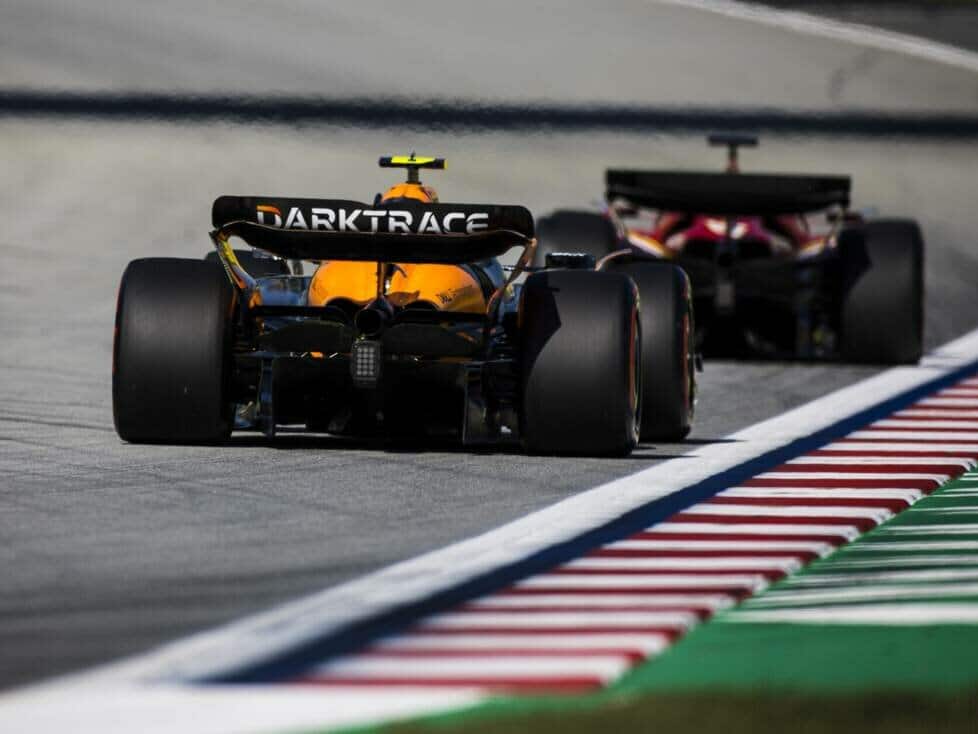The fact that the avoidable contacts between Leclerc and Norris and Stroll and Hamilton in Barcelona’s FT3 went unpunished sends out the wrong signals
The final practice session in Barcelona last weekend provided plenty to talk about with two incidents, one between Charles Leclerc and Lando Norris and the other between Lance Stroll and Lewis Hamilton
Both Leclerc and Stroll felt obstructed by their rivals in the third free practice session and “retaliated” with a questionable maneuver, which went unpunished. Both were only given a warning.
When asked about the situation with Norris, Leclerc explained: “Lando came out of the pit lane and I was on a push lap behind him. When he stopped, I stopped too.”
“I braked to be next to him, but I misjudged so that I was on the right-hand side. I didn’t want to hinder the cars behind me. So on the one hand I was frustrated and on the other I looked in the mirrors so as not to obstruct anyone, and then we collided, but it was more of a misunderstanding,” said Leclerc.
He assures: “Even if you are frustrated, you never want to touch anyone, especially not in the third free practice session. After all, you don’t want to damage a car, first and foremost your own, because qualifying is right after that. So that’s never the goal. “
F1 expert Marc Surer shows understanding
Nevertheless, Leclerc’s maneuver was enough to damage Norris’ front wing. Formula 1 expert Marc Surer nevertheless defends the Ferrari driver.
“I think the nerves are tense. Everyone knew that there were actually four teams that could take pole position. That’s natural and it’s about the last tenth,” he says. “We saw that in the end and I think the nerves were just a bit tense because of that. “
He shows understanding for Leclerc’s reaction: “As a racing driver, you want to hit him because he was unfair to you.” However, Formula 1 drivers also have to be role models, especially with regard to the next generation of Formula 3 and Formula 2 drivers.
“And if the big stars do things like that, they will copy it, because if they get away with it, they should get away with it. So it’s a bad example and should actually be punished more severely,” Surer continued.
The fact that both Leclerc and Stroll got away with a warning for what can charitably be described as “avoidable contact” therefore leaves a bitter aftertaste. Especially as both incidents were reminiscent of Sebastian Vettel’s legendary bump into Hamilton in Baku 2017.
This had earned the German a 10-second stop-and-go penalty and three penalty points, so there was an obvious benchmark for similar cases
The reasons given by the race stewards
Instead, this time only a warning was issued. So the message from the race stewards is: It is generally allowed to touch someone on purpose and only get a slap on the wrist for it, as long as you don’t do it “dangerously”
“My bad, I didn’t see him…”
Lewis put his hand up after this close call with Stroll’s Aston Martin ♂️F1 SpanishGP pic.twitter.com/cKHoAjrJXj
– Formula 1 (@F1) June 22, 2024
The race stewards assessed the contact between Stroll and Hamilton as follows: “The driver of car 18 stated that he was impeded by car 44 at turn 5, which upset him. He admitted that he wanted to express his displeasure to the other driver by overtaking him at the exit.”
“The two cars made slight contact, but it was only accidental. The stewards consider the movement of car 18 to be unpredictable, although it was not dangerous, and therefore issue a caution in accordance with precedent.” However, this doesn’t add up.
Stroll admitted that he deliberately drove in front of Hamilton’s car to make a mark, which led to the contact. Dangerous or not, it still appears to be an attempt to use a car as a weapon to vent frustrations.
So Stroll’s testimony that it was a deliberate act should be punished more severely. But the commissioners’ verdict is a decision based on the output and not the input – as in the case of Leclerc, although he denied intent.
The big talking point from FP3 F1 SpanishGP pic.twitter.com/9R08DJor4K
– Formula 1 (@F1) June 22, 2024
“The driver of car 16 stated that he was obstructed by car 4 in turn 5, which annoyed him,” was how the stewards summarized the incident.
“He then had to abandon his flying lap and claimed that he misjudged the position of his car when trying to get off the racing line before turn 7 and had a slight contact with car 4.”
“Regardless of any possible intent, the Stewards consider the movement of car 16 to be erratic, even if it was not dangerous, and therefore issue a caution in accordance with precedent,” the ruling said.
Free ticket for forced contact?
This also let Leclerc off the hook. But the signal effect is fatal. After all, penalties serve not only as punishment, but also as a deterrent. Both failed to materialize, which is tantamount to a free pass for forced contacts, provided they happen in practice and at low speed.
But Formula 1 is not the place to play with deliberate contact. Avoidable contact is one thing and carries its own risk. Intentionally causing that risk seems to be at odds with all the growing safety measures in modern motorsport.
And it was just a practice session. It wasn’t about fighting for the lead or saving a possible point at the last second. That makes the incidents all the more unnecessary





